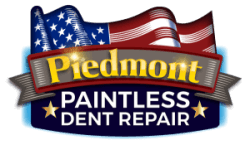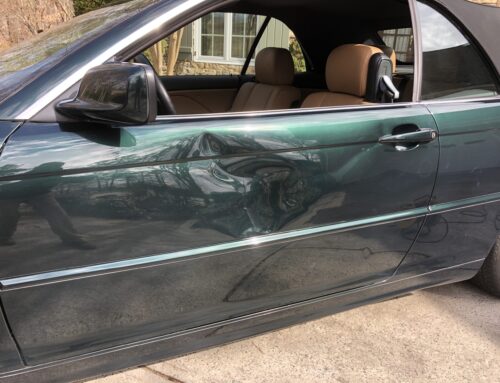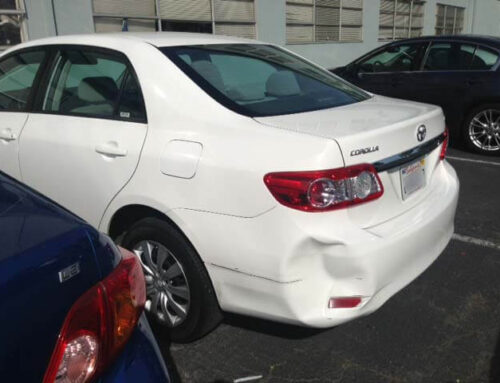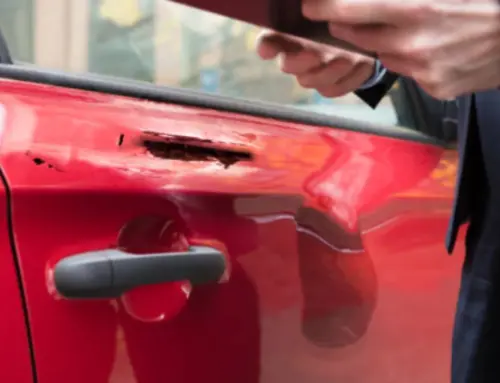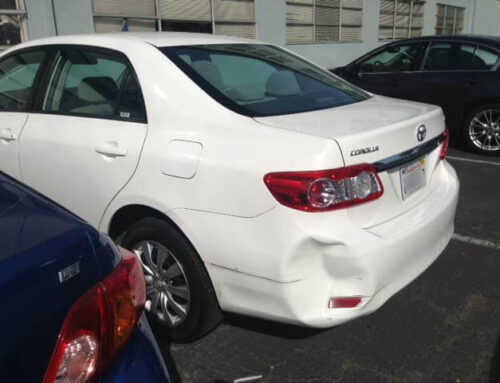As an auto enthusiast, there is nothing worse than witnessing your prized possession become marred by chips, scratches, and imperfections through no fault of your own.
However, the advent of automotive paint protection films provides a proactive solution to help shield vehicles from inevitable road hazards and maintain a factory-fresh appearance for years to come.
Paint protection films (PPF) are crucial for maintaining the showroom-quality appearance of your vehicle. As an invisible shield, PPF protects against various forms of damage, such as rock chips, scratches, bird droppings, and harsh weather conditions. This urethane film is applied to the painted surfaces of a car, and its self-healing properties enable it to absorb impacts and restore itself from minor abrasions, maintaining a pristine exterior and bolstering the vehicle’s resale value.
Let’s talk more about PPF in this post!
What is a paint protection film, and how does it work to shield a vehicle’s paint from damage?
A paint protection film (PPF), also known as a clear bra or a clear film, is a transparent, thermoplastic urethane film that is applied to the painted surfaces of a vehicle to protect them from damage. PPF works as a barrier against various types of hazards that can cause harm to the vehicle’s paint, including:
- Rock Chips and Road Debris: PPF is highly resistant to impacts from rocks, stones, gravel, and other debris kicked up by other vehicles on the road. The film absorbs the impact energy, preventing the paint from chipping or scratching.
- Insect Splatter and Bird Droppings: The smooth, non-porous surface of PPF makes it easier to clean and removes bug splatter, bird droppings, and other contaminants without damaging the paint underneath.
- UV Damage: PPF contains UV inhibitors that help to block harmful ultraviolet (UV) radiation from the sun, which can cause paint fading, oxidation, and discoloration over time. PPF helps preserve the vehicle’s appearance and resale value by shielding the paint from UV rays.
- Chemical Stains and Environmental Fallout: PPF provides a protective barrier against chemical stains, such as road salt, acid rain, tree sap, and industrial pollutants, which can etch or stain the paint surface.
- Minor Scratches and Abrasions: While PPF cannot prevent all scratches, it does offer an additional layer of protection against minor abrasions from brushes, car washes, and other everyday activities.
PPF is applied to the vehicle’s most vulnerable sections such the hood, fenders, side mirrors, bumper, and door edges. For ultimate protection, it can be put on the entire car. The film is custom-cut to match each car type for a precise and seamless installation.
Before applying PPF with a squeegee and heat gun to remove air bubbles and ensure adhesion, the vehicle’s paint surface must be cleaned and prepared. The film is barely noticeable after putting it on and doesn’t change the vehicle’s appearance.
Paint protection film protects a vehicle’s paint finish from environmental and mechanical hazards for years, preserving its appearance and value.
Are different types or grades of paint protection films available, and how do they vary in effectiveness?
Yes, different types and grades of paint protection films (PPF) are available on the market, each varying in terms of material composition, thickness, durability, and effectiveness. The main types of PPF include:
- Self-Healing PPF: This type of PPF contains a topcoat layer that can “heal” or self-repair minor scratches and swirl marks when exposed to heat from the sun or a heat source like hot water or a heat gun. The self-healing properties help maintain the film’s appearance and prolong its lifespan.
- Standard PPF: Standard PPF is a basic form of protection film that provides a layer of defense against rock chips, road debris, and other hazards. While it may not have self-healing capabilities, it offers adequate protection for the vehicle’s paint surface.
- High-Gloss PPF: High-gloss PPF is designed to enhance the appearance of the vehicle’s paint by providing a glossy finish that mimics the look of a freshly waxed car. This type of film offers both protection and aesthetic appeal.
- Matte PPF: Matte PPF has a non-reflective, matte finish popular among enthusiasts looking to achieve a unique and custom look for their vehicle. Matte PPF provides the same level of protection as standard PPF but with a different aesthetic.
- Hydrophobic PPF: Hydrophobic PPF contains special additives that repel water, making cleaning and maintaining the vehicle’s paint surface easier. This type of film helps prevent water spots and streaks, resulting in a cleaner and more polished appearance.
Material thickness, adhesive strength, UV resistance, and self-healing affect PPF quality and performance. Thicker PPF films resist impacts and abrasions, making them more durable.
Consider your needs, tastes, and vehicle protection level before choosing a paint protection film. A skilled installation can assist you choose the best PPF type and grade for your budget and vehicle’s paint finish.
What are the key benefits of using paint protection films for vehicle exteriors, and how do they compare to other protective options?
Paint protection films (PPF) offer several key benefits for vehicle exteriors, making them a popular choice among car owners looking to preserve the appearance and value of their vehicles. Some of the main advantages of using PPF include:
- Protection against Rock Chips and Road Debris: PPF provides a durable barrier that shields the vehicle’s paint surface from damage caused by rocks, stones, gravel, and other debris encountered on the road. The film absorbs the impact energy, preventing chips, scratches, and dents that can detract from the vehicle’s appearance.
- UV Protection: PPF contains UV inhibitors that help block harmful ultraviolet (UV) radiation from the sun, which can cause paint fading, oxidation, and discoloration over time. Protecting the paint from UV damage, PPF helps maintain the vehicle’s color and shine for longer.
- Chemical and Environmental Resistance: PPF offers resistance to chemical stains, environmental fallout, and contaminants such as road salt, bird droppings, tree sap, and industrial pollutants. The film helps prevent etching, staining, and corrosion of the paint surface, keeping the vehicle looking clean and well-maintained.
- Self-Healing Properties: Some PPF products feature self-healing properties that allow minor scratches and swirl marks to disappear over time when exposed to sun or heat source heat. This helps keep the film looking new and reduces the need for frequent maintenance or replacement.
- Enhanced Aesthetic Appearance: PPF is virtually invisible once installed, preserving the original look and finish of the vehicle’s paint while providing an additional layer of protection. The film maintains the clarity and gloss of the paint surface, ensuring a seamless and unobtrusive appearance.
When compared to other protective options such as waxing, sealants, and ceramic coatings, PPF offers several distinct advantages:
- Durability: PPF provides a thicker and more robust protective barrier than waxing or sealants, offering superior resistance to impacts, scratches, and abrasions.
- Longevity: PPF is designed to last several years, providing long-lasting protection against various environmental and mechanical hazards. In contrast, waxing and sealants may require more frequent reapplication to maintain effectiveness.
- Customization: PPF can be custom-cut to fit the contours of specific vehicle models, ensuring precise coverage and protection for vulnerable areas such as the hood, fenders, bumpers, and side mirrors. This level of customization is only sometimes possible with waxing or sealants.
- Self-Healing: Unlike waxing or sealants, which do not have self-healing properties, some PPF products offer the added benefit of self-repairing minor scratches and swirl marks, helping to maintain the appearance of the vehicle’s paint surface.
Overall, paint protection films offer a comprehensive and long-lasting solution for protecting vehicle exteriors against a wide range of hazards, making them an ideal choice for car owners looking to preserve the beauty and value of their investment.
How is a paint protection film applied to a vehicle, and what is the typical cost associated with installation?
The application of a paint protection film (PPF) to a vehicle involves several steps to ensure a precise and seamless installation:
- Surface Preparation: The vehicle’s paint surface is thoroughly cleaned and decontaminated to remove any dirt, debris, or residues that could interfere with adhesion.
- Pattern Creation or Cutting: The PPF installer uses computer-aided design (CAD) software or pre-cut templates to create custom patterns for each vehicle section the film will cover. Alternatively, the film may be hand-cut on the vehicle for a precise fit.
- Film Application: The PPF is carefully applied to the prepared surface, starting from one end and gradually working across the panel. The installer uses a squeegee and heat gun to remove air bubbles and ensure proper adhesion.
- Trimming and Finishing: Excess film is trimmed away from edges and contours, and any remaining air bubbles are smoothed. The edges of the film are meticulously tucked or wrapped around edges and seams for a seamless appearance.
- Final Inspection: Once the installation is complete, the vehicle is inspected to ensure that the film is applied correctly, free of imperfections, and provides complete coverage of the designated areas.
Installation costs depend on several factors, including:
- Size of the Vehicle: Larger vehicles or vehicles with complex body shapes may require more film and labor, resulting in higher installation costs.
- Type and Grade of PPF: Different types of PPF, such as standard, self-healing, high-gloss, or matte, features and prices may vary performance.
- Extent of Coverage: Full-body coverage will cost more than partial coverage, covering only high-impact areas like the front bumper, hood, and side mirrors.
- Labor Rates: Installation costs may vary depending on the labor rates charged by the PPF installer and their level of expertise.
Installing paint protection film on a car costs hundreds to thousands. Get bids from various installers and ask about film type, warranty coverage, and installation method to make an informed decision. PPF installation is an upfront cost, but many automobile owners believe it’s worth it to protect their paint and maintain resale value.
Invest in PPF – Safeguard Your Vehicle from Future Damage!
At Piedmont Dent Repair, we believe in the value of longevity for your vehicle. Investing in premium Paint Protection Film (PPF) is more than just preserving aesthetics; it’s about safeguarding your investment.
Every car we treat with PPF is given the utmost care, ensuring long-lasting resilience against scratches, chips, and the elements. Secure your car’s prime condition and future value with us—where quality meets dedication in vehicle protection. Protect with Piedmont; your vehicle deserves it.
